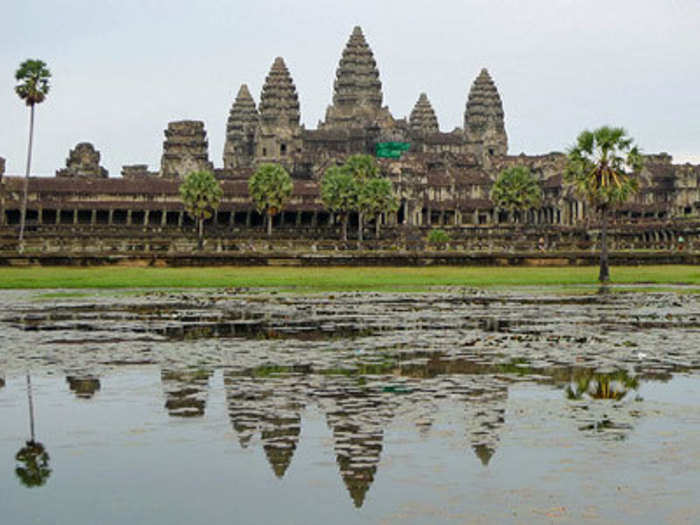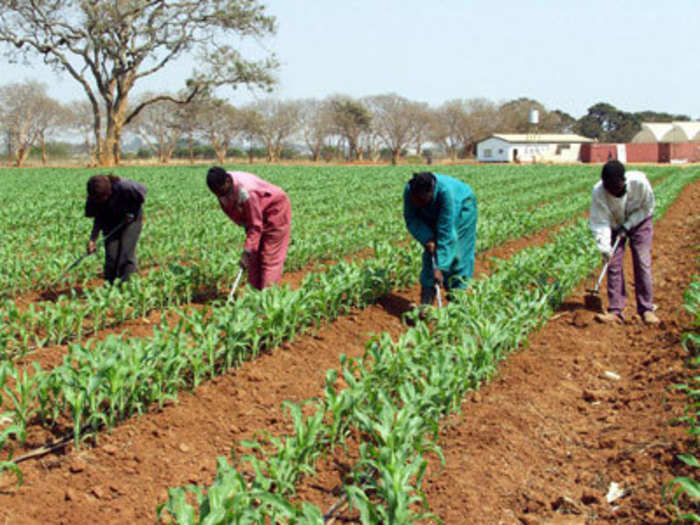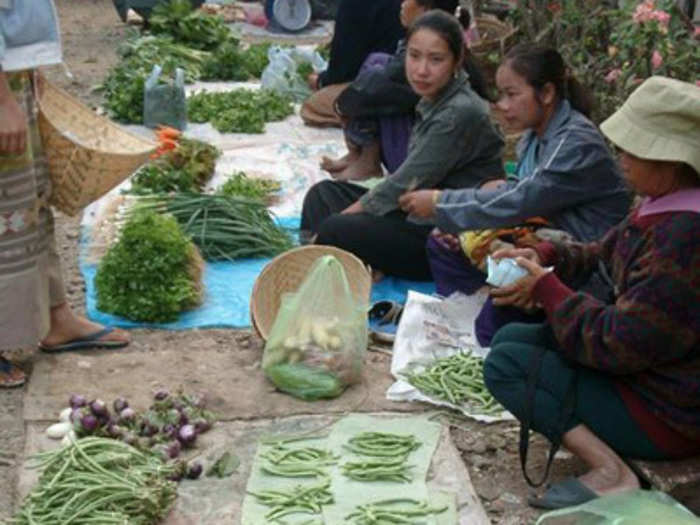- Home
- stock market
- The 20 Fastest-Growing Countries In The World
The 20 Fastest-Growing Countries In The World
#20: Uganda

#19: Cambodia

2012 GDP: +6.60%
2013 GDP: +6.70%
2013-2015
GDP CAGR: +7.39%
Economy: Cambodian textiles amount to over 70% of the nation’s exports. Recent oil discoveries and continued development of mineral resources will have a positive impact on GDP growth. A potential long-term barrier to growth remains: educating and creating jobs for Cambodian youth, as the majority of its population is under 25 years old.
Source: World Bank, CIA World Factbook
#18: Tanzania

2012 GDP: +6.50%
2013 GDP: +6.80%
2013-2015
GDP CAGR: +7.43%
Economy: This 'frontier' nation is among the poorest in the world in terms of GDP per capita. Agriculture accounts for over 25 percent of GDP and 85 percent of exports while employing approximately 80 percent of the workforce. The country does possess significant stores of diamonds, gold, and iron.
Source: World Bank, CIA World Factbook
#17: Zambia

2012 GDP: +6.70%
2013 GDP: +7.10%
2013-2015
GDP CAGR: +7.46%
Economy: Privatization of copper mines provided an impetus for growth since the 1990s. Economic growth is vulnerable to price shocks in copper. The IMF forgave $6 billion of Zambia’s debts in 2005. The nation struggles to keep inflation in check.
Source: World Bank, CIA World Factbook
#16: Panama

2012 GDP: +10.00%
2013 GDP: +7.50%
2013-2015
GDP CAGR: +7.50%
Economy: The services sector accounts for more than three-quarters of GDP. The capacity of the Panama Canal is set to double by 2014, the culmination of a 7-year project that cost $5.3 billion. Unemployment in this Latin American nation dropped to a minuscule 3 percent in 2011.
Source: World Bank, CIA World Factbook
#15: Sri Lanka

2012 GDP: +6.10%
2013 GDP: +6.80%
2013-2015
GDP CAGR: +7.54%
Economy: GDP has been buoyed by the reconstruction of Sri Lanka after decades of war. Growth is hampered by high debt payments, but the nation's income per capita is among the highest in the region.
Source: World Bank, CIA World Factbook
#14: Uzbekistan

2012 GDP: +8.20%
2013 GDP: +7.50%
2013-2015
GDP CAGR: +7.62%
Economy: The former Soviet satellite state exports natural gas, gold, and cotton -- but has received international criticism for the amount of child labor used production of the latter. Income inequality has actually increased since the nation's independence. Its relative isolation from the global economy left Uzbekistan insulated from a major downturn resulting from the financial crisis.
Source: World Bank, CIA World Factbook
#13: Gambia

2012 GDP: +3.90%
2013 GDP: +10.70%
2013-2015
GDP CAGR: +7.85%
Economy: Gambia has few natural resources and an underdeveloped agricultural sector. The country is reliant upon transfer payments from abroad and foreign aid. Its position on this list is due to low base GDP, which artificially skews growth projections upwards relative to other nations. Tourism, particularly eco-tourism, is booming.
Source: World Bank, CIA World Factbook
#12: Rwanda

2012 GDP: +7.70%
2013 GDP: +7.5-%
2013-2015
GDP CAGR: +7.88%
Economy: Rwanda has an easier time attaining high growth rates due to its low starting GDP, relative to developed European economies or the United States. Over 90% of the workforce is engaged in subsistence farming. The Rwandan government has invested in information technology as well as education in efforts to promote sustainable economic growth.
Source: World Bank, CIA World Factbook
#11: Democratic Republic of the Congo

2012 GDP: +6.60%
2013 GDP: +8.20%
2013-2015
GDP CAGR: +7.92%
Economy: Though the nation has vast potential wealth, growth has been limited due to corruption and war. The mining sector provides for the majority of the nation's exports, and includes diamonds, gold, and copper. The DRC received debt relief from the IMF in 2010.
Source: World Bank, CIA World Factbook
#10: Ethiopia

2012 GDP: +7.80%
2013 GDP: +7.50%
2013-2015
GDP CAGR: +7.96%
Economy: Coffee has been a major export for the nation. While GDP growth rates are high, GDP per capita remains among the global laggards. In Ethiopia, the state owns all land, which is significant since agriculture accounts for over 40 percent of GDP.
Source: World Bank, CIA World Factbook
#9: Angola

2012 GDP: +8.10%
2013 GDP: +7.20%
2013-2015
GDP CAGR: +8.08%
Economy: This OPEC member has 85 percent of its GDP come from oil production and related industries. The nation remains marred by corruption and the land mines left over from decades of civil war. Most Angolans practice subsistence farming to make a living.
Source: World Bank, CIA World Factbook
#8: Laos

2012 GDP: +8.20%
2013 GDP: +7.50%
2013-2015
GDP CAGR: +8.08%
Economy: 75% of Laos’ workforce practices subsistence farming, which accounts for around 30% of GDP. Foreign investment in hydro, mining, and construction has spurred Laos’ growth and reduction of poverty over the past two decades. Laos’ debt burden is modest compared to many of its Asiatic counterparts.
Source: World Bank, CIA World Factbook
#7: Ghana

2012 GDP: +7.50%
2013 GDP: +7.80%
2013-2015
GDP CAGR: +8.15%
Economy: Ghana’s developed Services sector contributes 50% of GDP, while oil, gold, and cocoa production provides the basis for future growth. Inflation is expected to outpace even robust real GDP growth over the next two years, and reducing the debt load remains a challenge for this middle-income African nation.
Source: World Bank, CIA World Factbook
#6: Mozambique

2012 GDP: +7.50%
2013 GDP: +8.00%
2013-2015
GDP CAGR: +8.73%
Economy: The majority of Mozambique’s population lives below the poverty line, and foreign aid accounts for half of its government’s budget. Aluminum comprises a third of the nation’s exports, and volatility in the commodity’s price has an impact on GDP growth.
Source: World Bank, CIA World Factbook
#5: China

2012 GDP: +7.90%
2013 GDP: +8.40%
2013-2015
GDP CAGR: +8.77%
Economy: The world’s largest exporter and second biggest economy has gradually transitioned from an isolated, state-planned economy and introduced elements of free markets. An aging population, decreasing farmland, lack of domestic consumption, and reducing regional imbalances are downside risks to Chinese GDP growth. China is on the forefront of alternative energy development, particularly in solar.
Source: World Bank, CIA World Factbook
#4: Sierra Leone

2012 GDP: +25.00%
2013 GDP: +11.10%
2013-2015
GDP CAGR: +9.54%
Economy: Nearly half of the workforce engages in subsistence farming, which leaves the nation's substantial mineral reserves relatively underdeveloped. Diamonds account for about half the value of Sierra Leone's exports. In the past, these were primarily 'blood diamonds', though the nation has worked hard to repair its image.
Source: World Bank, CIA World Factbook
#3: Democratic Republic of Timor-Leste

2012 GDP: +10.00%
2013 GDP: +10.00%
2013-2015
GDP CAGR: +10.63%
Economy: Offshore drilling for oil and gas is the principal source of government revenues. The government has increased spending on infrastructure to continue to repair damages caused by Indonesian troops in 1999. Unemployment and dependence upon O&G are roadblocks to growth.
Source: World Bank, CIA World Factbook
#2: Iraq

2012 GDP: +11.10%
2013 GDP: +13.50%
2013-2015
GDP CAGR: +12.23%
Economy: Foreign investment inflows are expected to increase in the wake of US Troop withdrawals. Oil exports, the impetus for the nation’s wealth, have returned to pre-war levels. Adoption of free market principles, strengthening the legal framework for businesses, and developing Iraqi infrastructure are keys to the country’s growth.
Source: World Bank, CIA World Factbook
#1: Mongolia

2012 GDP: +11.80%
2013 GDP: +16.20%
2013-2015
GDP CAGR: +13.60%
Economy: Mongolia successfully transitioned from a Cold War Soviet satellite state into semi-modern, mixed capitalist economy. Mineral deposits of copper, gold, coal, uranium, tin, and tungsten are the major sources of Mongolia’s wealth. Commodity exports – overwhelmingly to China – and foreign investment will drive GDP growth.
Source: World Bank, CIA World Factbook
This country just missed out on this list: it's ranked #22.

Popular Right Now
Popular Keywords
Advertisement